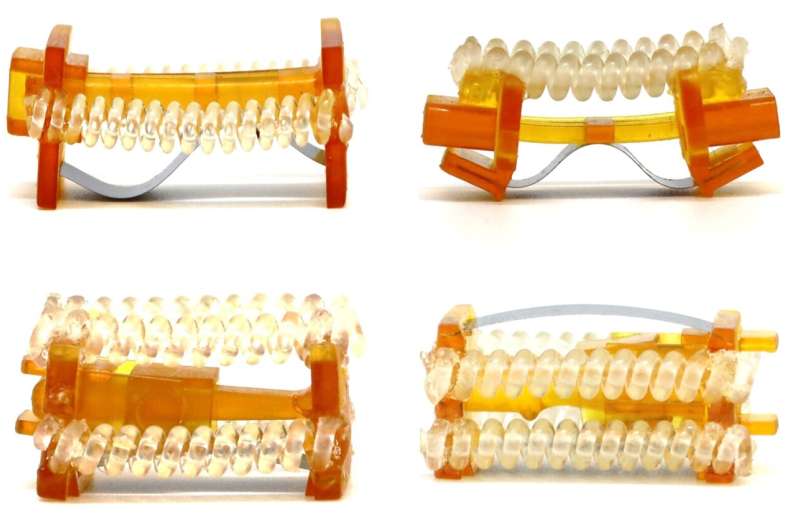| Jan 24, 2023 | |
Click beetle-inspired robots jump using elastic energy (w/video) |
|
| (Nanowerk News) Researchers have made a significant leap forward in developing insect-sized jumping robots capable of performing tasks in the small spaces often found in mechanical, agricultural and search-and-rescue settings. | |
| A new study led by mechanical science and engineering professor Sameh Tawfick demonstrates a series of click beetle-sized robots small enough to fit into tight spaces, powerful enough to maneuver over obstacles and fast enough to match an insect’s rapid escape time. | |
| The findings are published in the Proceedings of the National Academy of Sciences ("Insect-scale jumping robots enabled by a dynamic buckling cascade"). | |
 |
|
| Jumping mechanisms of four beetle-sized robots. (Image: Yuzhe Wang) | |
| Researchers at the University of Illinois Urbana-Champaign and Princeton University have studied click beetle anatomy, mechanics and evolution over the past decade. A 2020 study (PNAS, "Nonlinear elasticity and damping govern ultrafast dynamics in click beetles") found that snap buckling – the rapid release of elastic energy – of a coiled muscle within a click beetle’s thorax is triggered to allow them to propel themselves in the air many times their body length, as a means of righting themselves if flipped onto their backs. | |
| “One of the grand challenges of small-scale robotics is finding a design that is small, yet powerful enough to move around obstacles or quickly escape dangerous settings,” Tawfick said. | |
| In the new study, Tawfick and his team used tiny coiled actuators (Science, "Stronger artificial muscles, with a twist") – analogous to animal muscles – that pull on a beam-shaped mechanism, causing it to slowly buckle and store elastic energy until it is spontaneously released and amplified, propelling the robots upward. | |
| “This process, called a dynamic buckling cascade, is simple compared to the anatomy of a click beetle,” Tawfick said. “However, simple is good in this case because it allows us to work and fabricate parts at this small scale.” | |
| Guided by biological evolution and mathematical models, the team built and tested four device variations, landing on two configurations that can successfully jump without manual intervention. | |
| This video shows high-speed camera video frames of the actuator snap-through and the ground interaction process for the SyP and SyP+, the highest jumping designs of the variations of the click beetle-inspired robots that the team fabricated. | |
| “Moving forward, we do not have a set approach on the exact design of the next generation of these robots, but this study plants a seed in the evolution of this technology – a process similar to biologic evolution,” Tawfick said. | |
| The team envisions these robots accessing tight spaces to help perform maintenance on large machines like turbines and jet engines, for example, by taking pictures to identify problems. | |
| “We also imagine insect-scale robots being useful in modern agriculture,” Tawfick said. “Scientists and farmers currently use drones and rovers to monitor crops, but sometimes researchers need a sensor to touch a plant or to capture a photograph of a very small-scale feature. Insect-scale robots can do that.” |
| Source: University of Illinois Urbana-Champaign |
We curated a list with the (what we think) 10 best robotics and AI podcasts – check them out!
Also check out our Smartworlder section with articles on smart tech, AI and more.

